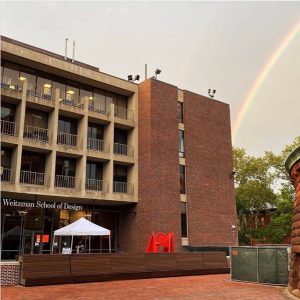
Photo via Weitzman School Instagram
The University of Pennsylvania Stuart Weitzman School of Design is launching the Center for the Preservation of Civil Rights Sites (CPCRS), a new initiative to “advance the understanding and sustainable conservation of heritage sites relating to African-American struggles for equality, from before the passage of the 14th Amendment to the present day.”
“From the Selma bridge where John Lewis and his fellow freedom marchers confronted state troopers to the Minneapolis street where George Floyd was killed by police, the story of Black Americans’ struggles for equality is written into our buildings and landscapes,” said Fritz Steiner, dean at the Weitzman School. “These sites are essential places of reflection for our democracy, and they are at risk of being lost for future generations.”
CPCRS will be led by faculty director Randall Mason, an associate professor in the Graduate Program in Historic Preservation at Penn.
“The history of African-American civil rights has many chapters, and I sincerely hope we are at the beginning of a new one,” said Mason. “It is our goal to acknowledge these histories, help make visible the legacies of civil rights in the American cultural landscape, and engage a diversity of civil rights advocates, historians, preservationists, researchers, and organizations as an academic partner.”
Brent Leggs, executive director of the African American Cultural Heritage Action Fund at the National Trust for Historic Preservation, joins CPCRS as a senior advisor and adjunct associate professor. Beginning this fall and continuing over the next three years, Leggs will lend his deep expertise to the strategies and outreach of CPCRS while teaching in the graduate program in historic preservation.
“Civil rights sites that bring forward the Black American fight for racial and economic justice have served a crucial role in redefining our collective history,” said Leggs. “Thanks to a broad coalition of partners with an affirmative voice for historic preservation, our collective efforts will grow the preservation economy and the critical infrastructure necessary to protect these important places and to tell their remarkable story.”
The current advisory group of CPCRS includes Leggs; Monica Rhodes, director of resource management, National Park Foundation; Kwesi Daniels, chair and assistant professor, Department of Architecture, Tuskegee University; Amy Freitag, executive director, J.M. Kaplan Fund; and Bill Adair, independent arts and culture consultant.
CPCRS’s work began in earnest in late 2019 through a new partnership with the Robert R. Taylor School of Architecture and Construction Science at Tuskegee University in Alabama with the mission of bringing more African-Americans into the preservation field, producing original research, and conducting public outreach. In addition to building teaching capacity at Tuskegee, the partnership aims to document and activate culturally significant buildings, sites, towns, and landscapes, and explore successful preservation, planning, and development strategies for small towns in the region. The initiative is supported by the J.M. Kaplan Fund and Kevin Penn, a Penn alumnus who is chair of the Board of Overseers at the Weitzman School.
CPCRS draws on the expertise of the Graduate Program in Historic Preservation at Penn, which has trained some of the world’s leading practitioners and educators in the fields of architectural conservation, preservation design, preservation planning, and public history of the built environment.




